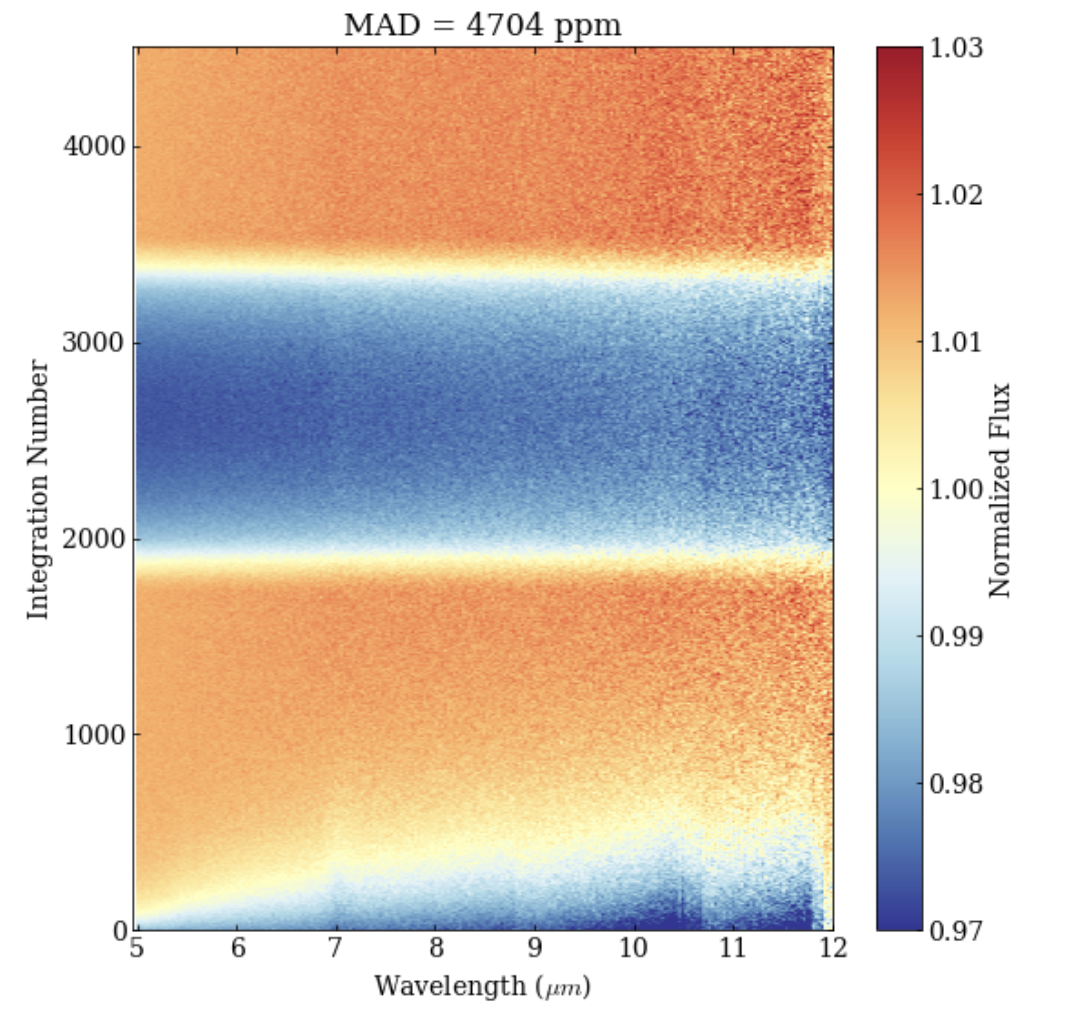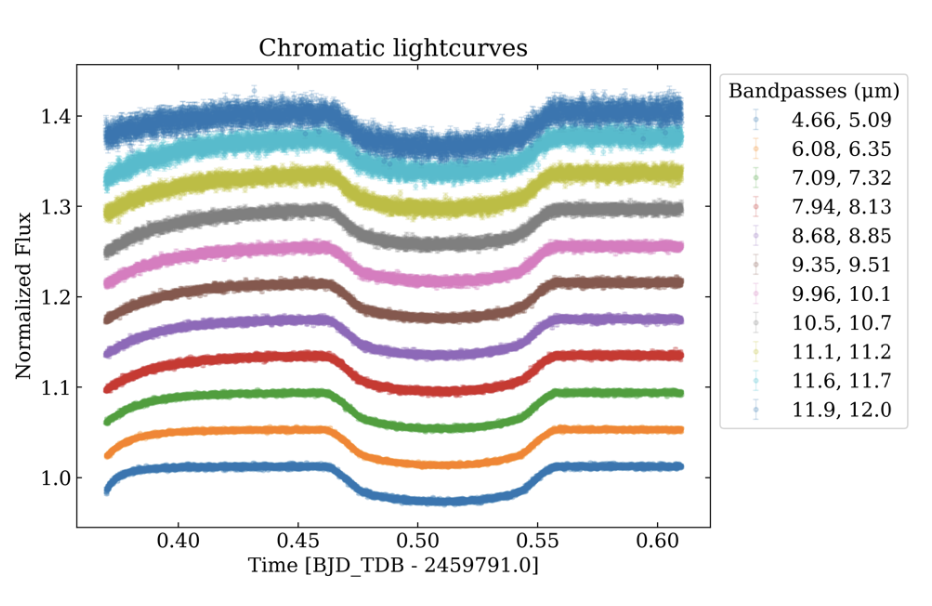Entering the realm of transiting exoplanets with JWST/MIRI observations
- AIM, CEA, CNRS, Université de Paris-Cité, Université Paris-Saclay, F-91191 Gif-sur-Yvette (achrene.dyrek@cea.fr)
The James Webb Space Telescope (JWST) launched in December 2021 will provide game-changing astronomical observations, thus bringing the exoplanetary science field to another level. The Mid-InfraRed Instrument (MIRI) with its Low-Resolution Spectrometer (LRS) will carry out transit spectroscopy of exoplanet atmospheres with an unprecedented sensitivity, in an amost uncharted wavelength range. On the dawn of receiving those first observations, worldwide scientific communities seek to carry out the development of data reduction pipelines. In order to fulfill this mission, there is a need for simulated JWST/MIRI data. During the past few months I provided low resolution spectroscopic and photometric time-series simulated observations to the community, getting involved into the Early Release Science Program (ERS) by simulating the 2022 data challenge MIRI observations. In this talk, we (1) introduce our realistic simulation pipeline including lightcurve modelling with detector latency effects, (2) show its outcomes on TRAPPIST-1b photometric time-series simulations as part of the guaranteed-time observation program (GTO) (ID: 1279 and ID: 1177) and on the ERS targets (including the 2022 data challenge), (3) show its results by carrying out the data analysis with both polynomial detrending and a blind source separation approach (Waldmann et al., 2013). The two images bellow show simulation results for Hot Jupiter WASP-80b. Left pannel: WASP-80b transit spectroscopic time-series simulation with JWST/MIRI Low resolution spectrometer. Output from the Eureka! pipeline (developed by Bell et al.) stage 3 after stacking all the integrations (data reduction step). Right pannel: WASP-80b transit chromatic lightcurves from simulation with JWST/MIRI LRS. Output from the Eureka! pipeline stage 4. The flux deficit at the beginning of each lightcurve is due to the latency effect.


To create such realistic simulations several pieces of software have been developped. Time-series of spectra are made using ExoNoodle (Martin-Lagarde et al., 2021) and then detector noises and non-linearities are added with MIRISim (Klaassen et al., 2021). Transiting exoplanet observations have a feature that makes them unique for simulations: the search for very faint flux variations which requires to take faint detector drifts into account. In that respect, to include such a feature into simulations, we have created MIRISim TSO, a module that adds latency effects to the detector pixels. Those effects have been modelled by fitting JPL test data and depend on each pixel flux level. These realisitic simulations will be soon refined by the commissioning data, allowing us to provide more and more robust simulated data to the community, thus anticipating and preparing for further observation cycles.
How to cite: Dyrek, A., Ducrot, E., and Lagage, P.-O.: Entering the realm of transiting exoplanets with JWST/MIRI observations, Europlanet Science Congress 2022, Granada, Spain, 18–23 Sep 2022, EPSC2022-1009, https://doi.org/10.5194/epsc2022-1009, 2022.

